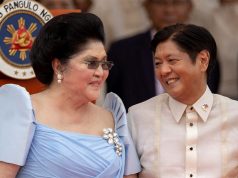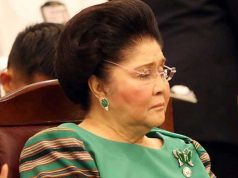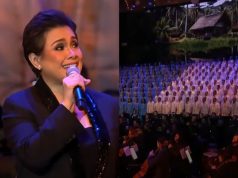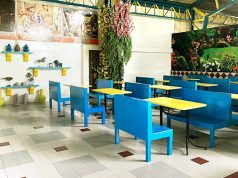
Lea Salonga earned the ire of some online Filipinos who recall the Marcos-led Martial Law period when she praised the former ruling family for its perceived patronage of the arts.
However, her remarks on social media were made two years ago. Screenshots of the comments thread were recently posted on Reddit Philippines, where it eventually caught the public’s attention.
A Facebook user asked, “What is your stand on the Marcoses, Lea Salonga?”
The Broadway singer replied, “They have always been kind to me and my family.”
Lea Salonga’s thoughts on the Marcos family from Philippines
Salonga continued in the thread, “There were many artists that Mrs. Marcos patronized (Cecile Licad was one of them), sent abroad for their education. No one does that anymore.”
She also replied that as a budding artist, she “sang a lot in the Palace for foreign guests” when she was a young singer of aged 10 to 14.
“I probably wouldn’t have ever dreamed I could make it as a performer abroad. I can’t ever look back upon it with regret. If nothing else, every presentation showed how beautiful our fashions were, and how talented our artists were.”
Salonga recalled that back then, Filipino artists were called on to perform at the presidential palace. “Bayanihan danced our folk dances, Pitoy Moreno showed his wares, and I sang,” she said.
The singer further clarified her views on Twitter in the same year when a user shared the Facebook screenshot and called out the performer.
You break my heart @MsLeaSalonga your career seems to hold more importance to u over life and basic rights of others https://t.co/wYOBuuASfN
— eugenie huibonhoa (@eugenienicole) May 15, 2016
.@MsLeaSalonga hindi rin ba importante yung perspektibo ng mga ginahasa? Pinatay? Inabuso? Pag-isipan natin ng mabuti please!
— eugenie huibonhoa (@eugenienicole) May 15, 2016
Salonga went in a comments tirade and pointed out that she was just a “sheltered” 10-years-old girl that time. She also called the Twitter user “unfair and judgmental.”
Important of course. But when you're 10 and sheltered, you know what you know. And then you discover more as you grow.
— Lea Salonga (@MsLeaSalonga) May 15, 2016
Do not assume you know my entire perspective from one exchange on Facebook. You are being wholly unfair and judgmental.
— Lea Salonga (@MsLeaSalonga) May 15, 2016
And in celebrating the good, I don't ignore the bad. The good and bad are part of the whole truth.
— Lea Salonga (@MsLeaSalonga) May 15, 2016
I do not doubt the truth about the Martial Law experience for many of our countrymen. That would be spitting on history.
— Lea Salonga (@MsLeaSalonga) May 15, 2016
I said they've always been kind to me and my family. That's it. That's all.
— Lea Salonga (@MsLeaSalonga) May 15, 2016
Salonga added that she voted for Leni Robredo instead of Bongbong Marcos in the 2016 elections. Robredo ran against Marcos in the position of the vice-presidency.
For the record, I voted for Leni (and was in the minority as far as the OAV votes). But let the truth rule. Read on. https://t.co/zzq9gIkpIT
— Lea Salonga (@MsLeaSalonga) May 15, 2016
In 2018, the issue resurfaced and Salonga recently shared a Twitter status full of shade. Comments implied that it was about the same topic.
You won’t be everyone’s cup of tea, and not everyone will be yours. Taste is a subjective thing. Just because you don’t like something doesn’t mean it’s bad. #Ampalaya #Durian #Brisket #Cheese #Scotch #Wine
— Lea Salonga (@MsLeaSalonga) August 11, 2018
Apparently, she never changed her views and continued to stand by her opinion of members of the Marcos family over their apparent contribution to arts and culture.
People did not let this go, arguing that her opinion must not be detached to the atrocities the family is largely associated with.
A Twitter user described Salonga’s admiration as “misplaced.”
Misplaced utang na loob. People's money/loans were used to fund the lavish Marcos royal court where Lea Salonga served as court jester
— Kristine Ong Muslim (@kristinemuslim) August 11, 2018
Others pointed out that Salonga never said she was a Marcos supporter.
People hating on Lea Salonga because of a response she made 2 years ago should stop and consider what it would be like from her perspective. She only said she was grateful, not that she condoned what happened under their administration. Simply dismissing her as another Marcos…
— tootooroo MD (@FunHunter10) August 12, 2018
Artists supporting Marcos
Twitter user @erwinagapay recalled that Salonga was one of the local artists who supported Ferdinand Marcos in the 1986 snap elections.
A group of artists called the “Coalition of Writers and Artists for Freedom and Democracy” pledged their support for the Marcos patriarch who they believed upheld cultural advancement.
The user linked a snapshot of a newspaper ad that showed the group’s statement and with it, the names of the members.
Some of them include Virgilio Almario, Nora Aunor, Gina Pareño, Fernando Poe Jr., Rico Puno, Susan Roces, Yoyoy Villame and Leah Salonga.
“Leah Salonga” might be misspelled but no other local artist in the country exists with the same name. The singer’s previous statements on Twitter reinforced her showing of public support.
The group’s statement backing Marcos was reported on Bulletin Today dated Jan. 28, 1986.
Arts and culture under Marcos
Marcos’ other half, Imelda, considered herself the “Patroness of the Arts” who supported cultural development.
She initiated the establishment of the Cultural Center of the Philippines, the Philippine High School for the Arts, Coconut Palace (“Tahanang Pilipino”) and the controversial Manila Film Center.
The “Iron Butterfly” encouraged local artists to perform in the Palace and in front of foreign dignitaries.
Joseph Olfindo, a singer and songwriter, revealed in an interview that the Marcoses invited the UP Concert Chorus to sing for them. He was one of its former members.
He said, “As a member of the Upsilon Choir (we serenaded Irene on her 18th birthday; she was the fraternity sweetheart), we did Best of Broadway at the CCP, we did shows at the Folk Arts Theater… and as The New Ministrels and Something Special Band, we did gigs for visiting foreign dignitaries on board ang pangulo.”

Olfindo continued that “the OPM was much appreciated,” the Metropop was “the event” and that the country’s culture “was for export” that time.
Songs composed by Filipinos like “Anak,” “Isang Mundo Isang Awit,” “Ikaw Ako Tayo Magkakapatid,” “Babae Ka,” “Nothing I Want More,” “Smile” and “I Don’t Love You Anymore” dominated the radio waves.
However, the Marcoses were criticized for using the arts and architecture as a way to assert their power over people and maintain public support throughout their dictatorship.
Heritage architect Gerard Lico noted in his book titled “Edifice Complex: Power, Myth and Marcos State Architecture” that the couple’s patronage towards the arts—particularly Imelda’s—was a form of a “social experiment.”
Imelda was accused of having an “edifice complex,” which Lico described as something that “plagues a nation with an obsession and compulsion to build edifices as a hallmark of greatness or as a signifier of national prosperity.”
Buildings like the Cultural Center of the Philippines were used by the couple to establish the “New Society” or “Bagong Lipunan.”
Critics also described the Manila Film Center’s erection as “an extravagant public relations ploy designed to give credibility to a regime they saw repressive and dictatorial.”









